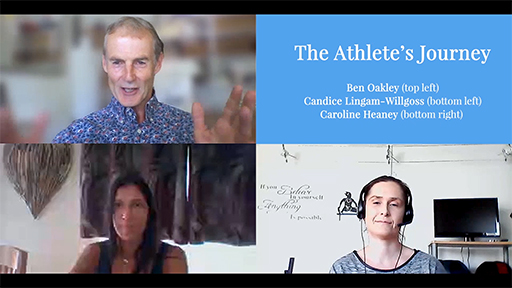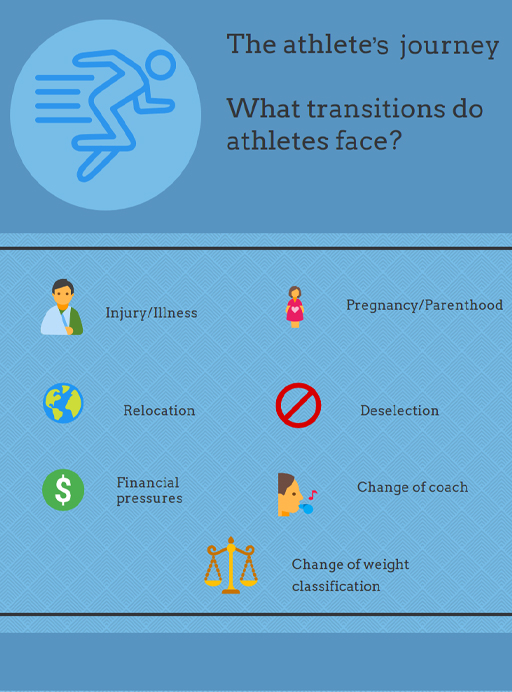1 What are transitions?
Before you begin to investigate the more in-depth psychological implications related to transitions, let’s first look at the range of transitions an athlete may experience during their journey through sport. This first activity introduces you to the course authors, Candice Lingam-Willgoss and Caroline Heaney, as they discuss their own personal experiences of transitions in sport.
Activity _unit2.2.1 Activity 1 Real people and real lives
Both Candice and Caroline were highly committed to their chosen sports, in fact, one of the reasons they wanted to write this course was due to their own personal experiences of transitions in sport. Watch the video below and make notes on the following points:
- What were the differences and similarities in Candice’s and Caroline’s pathways into their chosen sports?
- What transitions have they both experienced?
- Note down the psychological impact of the transitions they experienced.
- Why did they retire from sport?

Transcript: Video 1
Discussion
As you listen to Candice and Caroline talk, you will have noticed how both still maintain involvement in sport and still identify closely with being an athlete. Both have experiences in very different sports and performance settings and retired at different ages.
Unlike many sports that you are introduced to at school, Candice’s first experience of her sport was through her family. She experienced a range of different transitions quite early on, from joining a ski team at 12 years old and finding herself in a high-performance setting at a very early age. She also reflects how, in the six years she competed, she had to grow up very quickly and spend a large proportion of her time away from home from a young age. While no one injury caused her to retire, she was skiing in pain a lot of the time and was quite realistic about the opportunity to ‘make it’ as a skier.
Candice’s story is in contrast to the relatively late transition into sport experienced by Caroline who didn’t join an athletics club until she was 16, something she reflects may have resulted in her having such a long career. Another difference is how Caroline refers to having a ‘phased retirement’, first retiring from hurdling and then from 400m/800m flat running. It is very clear she still misses competing on the track.
In the last activity you learned about the different transitions Candice and Caroline have made in their sporting journeys. Other transitions that athletes may experience throughout their sporting life, and which you will explore in the rest of this course, are shown in Figure 1.
You will explore both normative and non-normative transitions in more detail in Sessions 4 and 5.
You have now heard about the authors’ experiences of transitions in sport. Next, you will reflect on your own transitions or those of someone you coach or are closely associated with.

